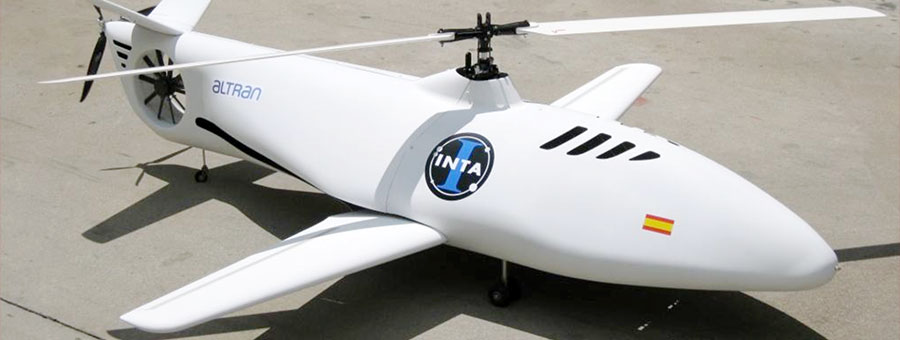Unmanned helicopters are increasing their capabilities daily at the time they are becoming able to perform a wide range of industrial and research operations. This technology permits to perform professional operations in a more efficiently way and with safety over manned systems, being a perfect solution to optimize production and yield in many industries.
Veronte for all unmanned helicopter layout
Veronte Autopilot has been designed for the autonomous control of any aircraft layout, including the most diverse configurations of unmanned helicopters. Thanks to the flexibility available on flight phase and control channel configuration, Veronte Autopilot permits to control helicopter type aircrafts in any of its configurations. Some of the most common configurations of unmanned helicopters compatible with Veronte Autopilot are:
-
Standard Configurations
This is the most common and the best known type of helicopter, it installs two rotors: the main rotor is installed in horizontal position over the helicopter and provides the required lift and thrust meanwhile tail rotor is installed in vertical position in the tail of the unmanned helicopters, counteracting torque exerted by the main rotor and enabling left and right yaw control.
-
Double Rotor in Tandem
These helicopters are intended for operation with relatively heavy loads. It has two horizontal main rotors that provides more powerful thrust and lift than available in unmanned helicopters with a single main rotor. The helicopter torque effect is neutralized because the two rotors rotate in opposite directions, and the left or right yaw control is controlled by tilting rotors in opposite directions.
-
Double Intermeshing Rotors
This kind of helicopter also provides high vertical force which permits the transport of heavy loads. Main advantage of these systems is that both rotors are close and superimposed with “V” axes, having a very precise intermeshing to avoid that both rotors collide. Torque and yaw control is achieved just as in tandem rotor unmanned helicopters.
-
Coaxial Rotors
This kind of helicopters include two main rotors sharing the same axis. It can maneuver in small spaces, where other helicopters can’t. Vertical thrust is in between non-coaxial bi-rotors and single main rotor helicopters. Torque control is achieved in the same way it is achieved on unmanned helicopters with tandem or intermeshing rotors, meanwhile left and right yaw control is achieved changing the inclination of leaves.
-
Hybrid Helicopters
These unmanned helicopters can fly horizontally, like an airplane, and vertically, like a helicopter. It is able to maneuver, land and take off in difficult access spaces in the same way a helicopter would at the time it has the high speed and autonomy of fixed wing aircrafts. This versatility can achieved in various ways; retractable wings and one main rotor, wing installing rotors with full wing rotation, rotor rotation,… In this case the torque and yaw control is achieved with the combination of the above methods and custom devices installed on aircrafts.
Advanced Functionalities in the Control of Unmanned Helicopters
Veronte Autopilot provides advanced functionalities and an easy to use system for aircraft and payload control, improving capabilities of unmanned helicopters. Veronte permits the installation of different types of infrared, multispectral and vision cameras in order to perform monitoring and surveillance functions in industries such as construction, mining, gas and oil pipelines, etc…
Through the Veronte Pipe user interface the operator can configure the autopilot to adapt performance to the specific needs of the operation and to the unmanned helicopter layout. Configurable flight phases makes possible to define custom behaviors in the system. The autopilot or the operator will switch among them during the operation. Some of the most common flight phases are: takeoff, landing, climb, cruise, hover, flight in fixed direction,… The system also permits to define PIDs and control channels so it becomes possible to customize the control for each platform. Veronte permits to define the different control variables, as well as the actuators that must act to control each of them, maximizing system capabilities.
VTOL aircraft applications may require different performance, being control of Yaw a key factor to achieve mission objectives. Versatility in Veronte Autopilot permits to define yaw control in unmanned helicopters, being some possible examples: Fixed yaw in a given magnetic direction, variable yaw in the direction of the path, variable yaw pointing a moving target,…
Available adaptive control in Veronte plays a very important role in the control of unmanned helicopters for the transport of relatively heavy loads. On applications such as parcel delivery or the dispersion of plant protection agents adaptive control permits to automatically adjust system controller during the flight so it always works at optimal rate for the cargo loaded in the helicopter.
